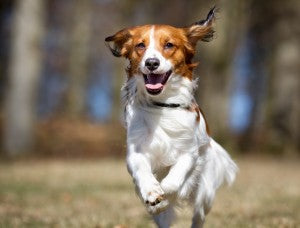
The Lintbells’ guide to cleaning your pets’ teeth
Did you know that around 80% of dogs and cats will have some form of dental disease before their 4th birthday? Thankfully, there’s lots we can do to help our pets have healthier mouths. We’ve been investigating the benefits of cat and dog teeth cleaning regimes.
Why you should clean your dog or cats’ teeth
If you want a happy, healthy pet, teeth cleaning should be part of your regular routine. This is because – just like people – pets can get odorous breath and issues with their gums if oral hygiene is left to chance. In the longer term, rotten or infected teeth and gums can leak bacteria into the bloodstream, putting stress on your pet’s heart and kidneys which is much more serious than just bad breath.
Dental details, facts, and figures
- If you don’t brush, most vets recommend an annual ‘dental’ – these can be expensive and potentially traumatic for your pet.
- A ‘dental’ (veterinary clean, descale, and polish under general anaesthetic) costs between £150 and £600 depending on your vet.
- If your pet needs teeth extracted, these costs increase significantly – and so will your pet’s recovery time.
- Some dog breeds are more prone to dental issues than others – very short muzzled breeds (Brachycephalic), dogs with narrow, pointed muzzles (like sheltie, poodles and dachsie), and some tiny-mouthed toy breeds seem to struggle more than average.
What’s causing that doggie breath?
All mammals have naturally-occurring bacteria in their mouths. When these bacteria combine with proteins and saliva in the mouth, a slimy substance called a ‘biofilm’ forms which coats the surface of the teeth. This is what we know as plaque – the stuff dentists recommend we remove by brushing regularly. Left unchecked, plaque builds up into a harder substance called tartar, which can result in rotten teeth for pets and people.
Teeth cleaning: domestic Vs. wild animals
Many people dismiss the idea of cleaning their pet’s teeth with excuses like ‘it’s not natural’ or ‘wolves and tigers don’t need their teeth brushing!’. However, our domestic pets live very different lives to their wild cousins.
Wild animals hunt for food and eat a predominantly raw diet that contains lots of natural teeth cleaning materials, like raw bones and their prey’s hides. Despite this, they can suffer from teeth problems too. The difference is that wild animals can’t visit a vet to remove sore teeth or treat abscesses. Sadly, if problems become severe enough to interfere with hunting or eating, the animal simply won’t survive.
Meanwhile, our domestic pets typically eat a more processed diet. Though crunchy kibble can help clean teeth to a degree, lots of us feed soft foods so our pets need a helping hand to keep their mouths healthy. Even if you feed only dry food, some pets still experience dental problems if you don’t clean their teeth regularly.
Pet teeth cleaning: what to use and how often
There are lots of teeth cleaning ‘aids’ out there – dental diets, chews, seaweed extracts, water additives and so on. However, just like in people, the fact remains that nothing is as effective as brushing.
You can do this with tooth polish and a soft bristled toothbrush. For guidance on techniques, it’s worth asking your veterinary nurse or a good pet groomer for a lesson.
Recommendations vary on how often you should brush your pets’ teeth– from after every meal like you might your own, to 4 times a week if you use a pet tooth polish.
The easy way to clean your pet’s teeth
Here at Lintbells, we got very fed up with the unwieldy brushes we found at pet shops to clean our own cats’ and dogs’ teeth – our pets found them uncomfortable, and there was liver-flavoured toothpaste everywhere!
We thought there must be a better way and decided to a look into other ways to clean dog teeth. After a lot of research, we came up with a much more practical solution: the YuCARE Tooth Cleaner.
This special sock is easy to use and gentle on your pet’s teeth and gums. Just pop it on the end of your finger and gently massage your pet’s teeth. It’s made of a unique microfibre, with 12,000 times more fibres than a toothbrush, so all you need to do is rub the teeth and gums in a circular motion, tooth by tooth.
No hassle, no fuss, and its unique silver-ion formula means it kills bacteria in the mouth on contact, and only needs a quick rinse under cold water before it’s hygienically clean again. A single cleaner can be used daily for 4-6 weeks – we have come to believe that it’s the secret to an oral hygiene routine you can commit to.
Amazingly, you don’t even need to use pet toothpaste if your best friend hasn’t got built-up tartar – though if you haven’t brushed before, it’s worth starting with a tooth polish or paste to gradually remove the plaque and tartar that has built up previously.
What about chews?
Special dental chews can help when it comes to keeping dog teeth clean, but they add calories to your pet’s diet too. They also only clean the back teeth – so for complete oral hygiene, you’ll need to give your furry friend a helping hand.
Do’s and don’ts of dental care for dogs and cats
DO
- Take it very gently and don’t push past your pet’s comfort zone.
- Be calm and positive – your pet will pick up your emotions if you’re stressed or in a hurry to finish.
- Start young – get your puppy or kitten used to teeth cleaning.
- Use a pet toothbrush – or a more ergonomic, less intrusive option like the YuCARE tooth cleaner which kills bacteria on contact so you don’t have to use toothpaste!
- Use a pet formula paste or polish rather than one intended for humans.
DON’T
- Try human toothpaste – artificial sweeteners and fluoride can be poisonous to pets.
- Rely on veterinary dentals alone – they’re expensive and require an anaesthetic that’s a risk to pets of all ages.
- Give up on older pets – it’s never too late to start cleaning your cat or dog’s teeth.
How often do you brush your pet’s teeth? Have you tried the YUCARE tooth cleaner yet? Please do leave a comment and tell us more about your cat or dog’s dental routine. Share this article with your friends on Facebook and join our friendly pet-loving community on Instagram.






